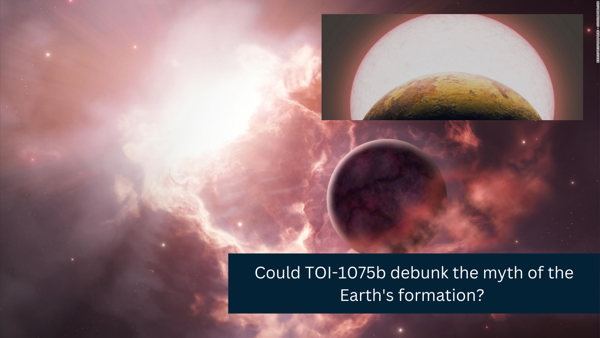
Science & Space
Will TOI-1075b Be Proven To Be A Cornerstone In Astronomy, Solving The Conundrum Of How The Rocky Planet Like Earth Formed?
Since the 1990s, when the Union of Soviet Socialist Republics (USSR) disintegrated and became a titular superpower of the world, NASA has been searching for various types of exoplanets because NASA used all of its resources to discover new avenues of space rather than spending money on useless competitive space programs.
NASA first discovered its exoplanet in 1988, but confirmation of that came in 1992. Since then, NASA has identified 9,169 potential candidates, with 5,241 confirmed discoveries, of which 3,916 are planetary systems.
Recently, NASA discovered an exoplanet in late 2022, which scientists believe has the potential to open Pandora's box for the astronomy and scientific communities because the planet has the potential to pave the way for the discovery of the formation of an Earth-like planet. If that becomes a reality, it will revolutionize the concept of planet formation, as well as the formation of space, and the universe. Until recently, the scientific community relied primarily on theories and speculation about the formation of the earth and universe, with Hubble's theory being one of the most widely accepted.
The planet is TOI-1075b, which is 200 light years away from earth, and it takes only 0.605 days, or 14.52 hours, to complete one revolution around its red dwarf star, which is much cooler than our sun. However, due to its extremely short revolution days, its distance from its host star is extremely close. In comparison to Mercury's distance from the sun, it is even closer to its star.
It has been identified by scientists as a super-earth, super-massive gas, or lava world. Scientists have classified it as a gas or lava world because they are unsure what it is made of, and more research is needed to determine its architectural formation and its anomaly, whether it is made of lava or gas.
Its mass is the cause of its anomaly. In comparison to its radius, the planet's mass is enormous. TOI-1075d has a mass of 9.95 times that of Earth, which is large for a planet with a radius of only 1.791 times that of Earth. Its measurements of mass had been done by the radial measurement method obtained with a planet finder spectrograph mounted on the Magellan II telescope. Although its density has been measured and finalized, scientists still believe it has a variable density. Its density varies between 9.32 and 9.95 g/cm3. Scientists believe that its variable density is due to its ultra-short period of revolution and proximity to its star. The exoplanet's surface temperature is 1922°F, which is equivalent to 1050°C.
As TOI-1075b could be a keystone in helping scientists crack a model of the formation of the Earth and Earth-like rocky planets, scientists have decided to revisit the planet with the assistance of the most advanced space telescope, James Webb. Scientists looking for James Webb's assistance in the broader context of ultra-short-period planetary systems are required for planet formation and characterization studies using emission spectroscopy. Scientists are also scrutinizing the radial data to look for more avenues to discover more data about this mysterious giant. They are not trying to overlook anything about this enigmatic mass giant.
The planet was first discovered with the help of Transiting Exoplanet Survey Satellite (TESS), which is why it possesses the name TOI-1075b. If scientists will be able to declassify the mystery about this star, then it will help scientists to break the myth about massive gas giants that are predominant in any solar system.

0 Comments